The Climate Change Research – Hydrology group visited several monitoring sites located along the Dempster Highway and Silver Trail in February.
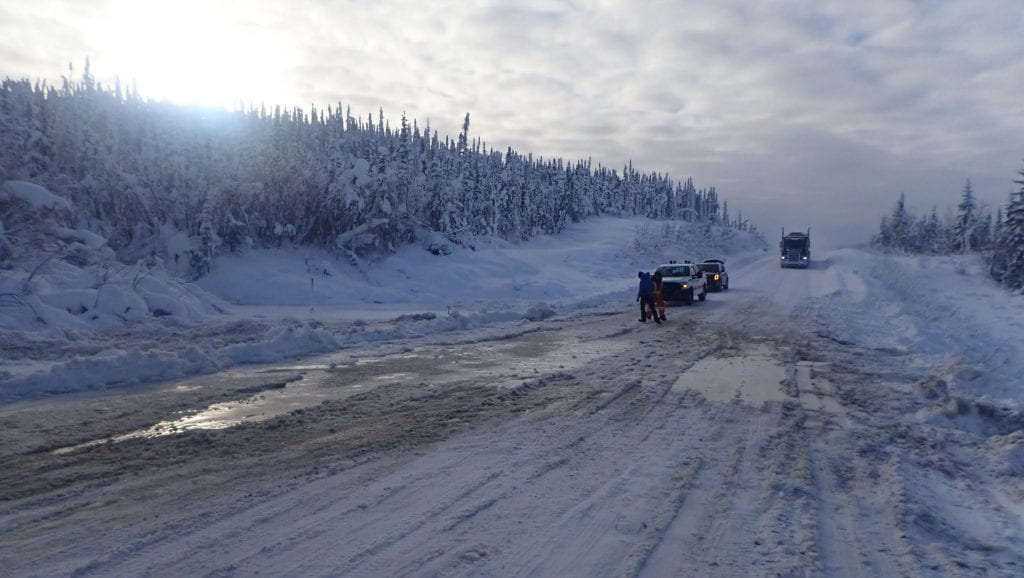
The research project, supported by Transport Canada (Government of Canada) and the Department of Highways and Public Works (Government of Yukon), started in the fall of 2022 with the deployment of remote instruments at stream crossings. The broad objective of the project is to improve the resilience of the northern transportation network to geohazards such as floods and permafrost thaw in a context of climate change. Specific goals include improving the response to winter floods caused by the formation of ice in ditches and culverts. As the picture above illustrates, overflow during the cold season creates hazardous driving conditions. In the spring, when snowmelt runoff reaches a ditch or a culvert that is blocked by ice, significant erosion can occur, potentially resulting in road surface damage and washouts. This form of ice process, often referred to as “glaciation” or “icing” (it is not a glacier, it melts entirely prior to the next winter), is common and extremely challenging to manage because the source of overflow is largely unpredictable.
Developing energy-efficient risk reduction strategies for icing along roads of the North relies on an adequate understanding of this process, including the water source, drainage pathways, and the location and timing of icing events. These conditions can vary from site to site. Our current monitoring activities and observations are designed to resolve this information. Here is a short summary:
***
This culvert has a diameter of about 2 m, and its entrance is blocked at 70% by overflow ice (colleague Stephanie Saal is visible, smiling at the far end). Water was still flowing under the ice when we visited the site, but recent temperature data transmitted by our instruments suggest that this may no longer be the case. This culvert was fully blocked by ice at the end of winter 2021 and 2022, and diesel generators were operated by the Government of Yukon to melt a conduit through the culvert and restore its evacuation capacity.

In the picture below, the 1 m-wide gallery melted in a thick ice body provides a good example of this form of active mitigation (colleague Ashley Dubnick is lying head down at the snow surface). The red heated cables below are temporarily connected to a wheel-mounted generator to melt a flow path under the ice. Our research team is developing strategies to reduce the use of fossil fuel for culvert maintenance during the winter season.
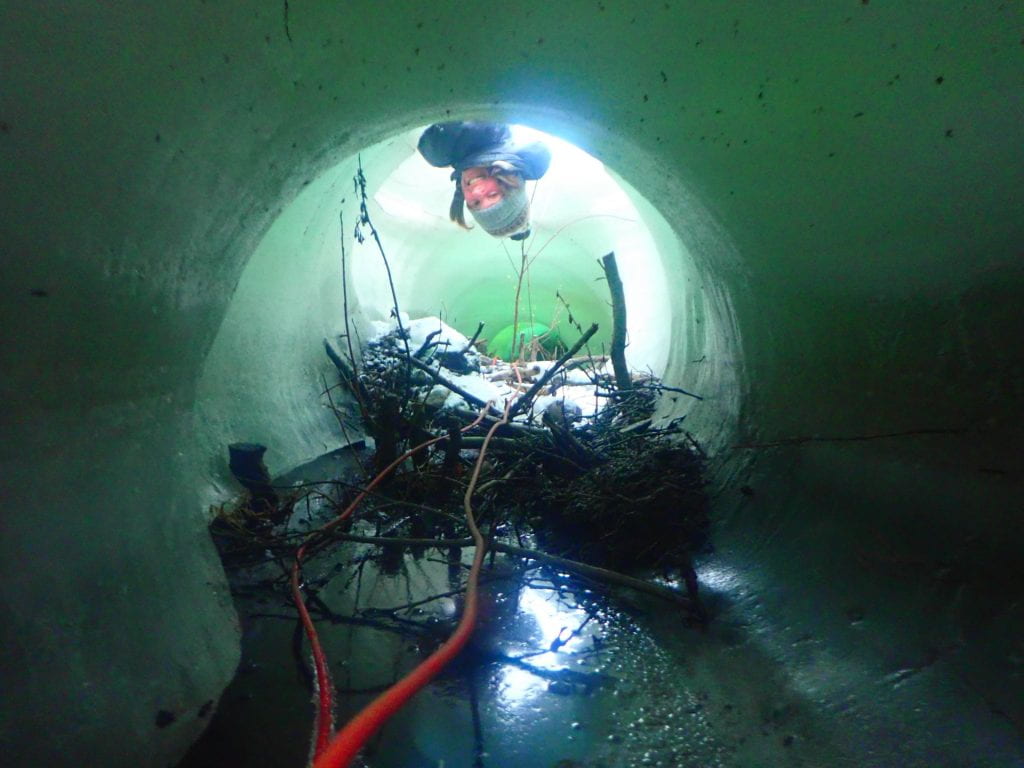
Ice cores were retrieved from some of the thickest ice bodies. Preliminary results indicate that frozen overflow layers present a wide range of dissolved matter concentration, which means that the water froze at different rates and locations over the first half of winter. These findings are important as they illustrate that an unstable water supply may feed this ice accumulations, making its growth (and the occurrence of overflow on the nearby roads) somewhat unpredictable.
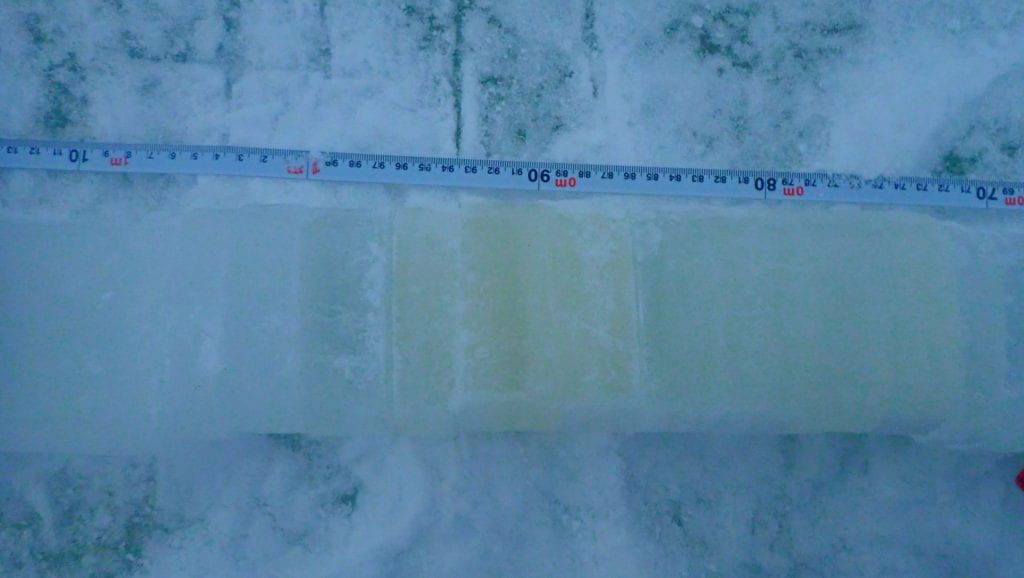
Snow is known to function as a very effective form of insulation, reducing heat loss from the underlying ice or ground. However, when overflow occurs, the snow may exacerbate the formation of ice by absorbing water, just like when a sponge gets saturated. This water eventually freezes to create 3D ice cover features. The picture below shows two giant culverts (4.5 m in diameter) with high snow drifts (the culvert acts as a wind tunnel). At some locations, these snow drifts have been converted to ice by the overflow, resulting in ice drifts that are up to 0.5 m above the original ice surface. These become efficient barriers for subsequent overflow and spring runoff.
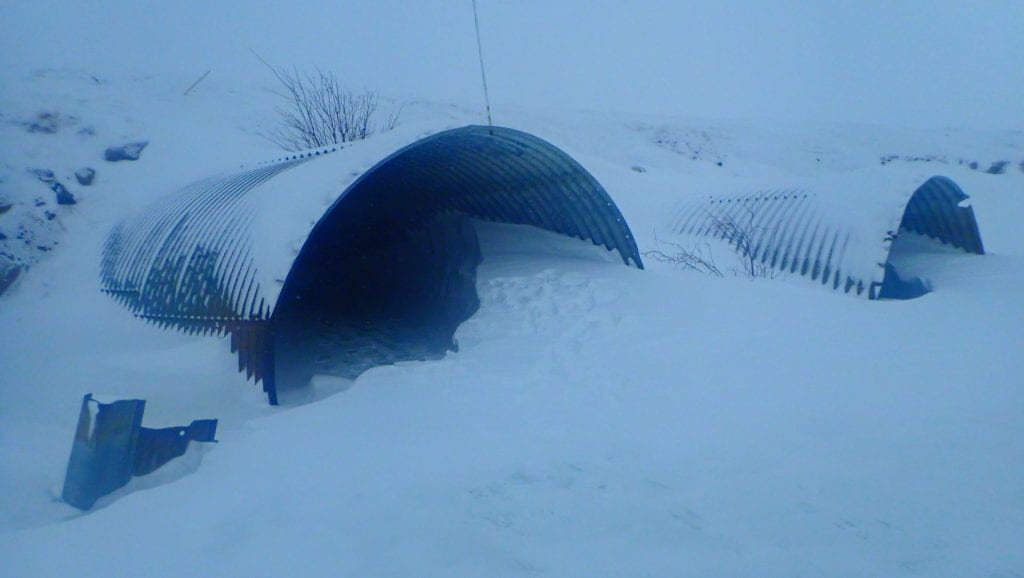
People travelling on Yukon roads during winter may have seen machinery removing ice from the ditch on the upslope side (this is where water and ice accumulates when culverts are blocked). This type of intervention may represent the most efficient approach to mitigate overflow ice in specific contexts, but this needs to be confirmed through complex hydrothermal analyses (considering both water supply and heat loss). The picture below was not taken at a construction site, as it may seem, but on the lower Dempster Highway.
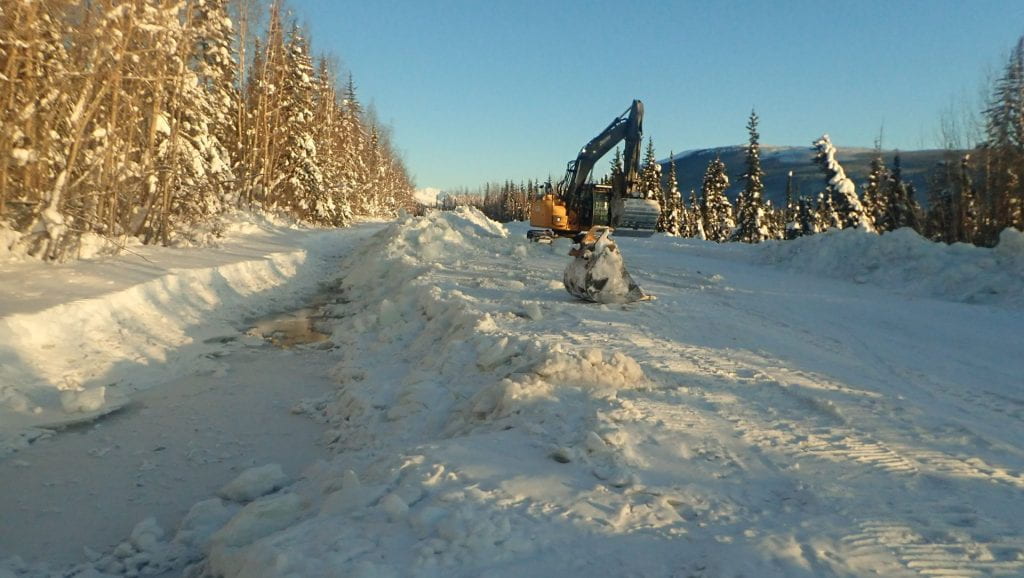
The following picture was taken at the end of May 2022 by Andras Szeitz, doctorate student with McMaster University, our partner on this project. The water accumulation (the stream turned into a deep pond) is the result of a culvert entirely blocked by ice. Fortunately, this situation did not cause overflow on the highway, but it was still detrimental to the local permafrost, which may eventually compromise the highway foundation. This example shows why icing mitigation approaches need to be developed, improved, and adapted to different physical settings.
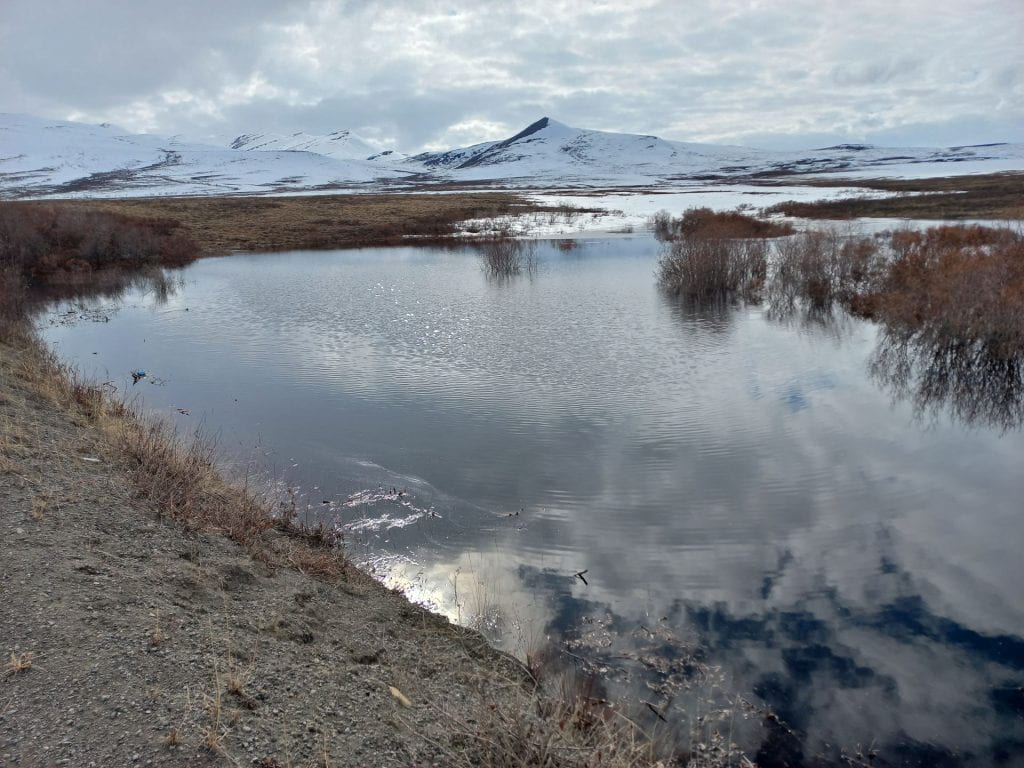
Because of its thermal properties, ice represents a significant heat deficit, even when its temperature is 0°C – it takes a lot of energy to convert ice to water, even without changing the temperature (this explains why it is used in coolers). Therefore, it is more energy efficient to remove ice from culverts mechanically than it is to melt the ice with an external heat source. However, culverts represent a confined environment that cannot easily be accessed by machinery. In the video link below, colleague Mederic Girard is testing horizontal drilling in a culvert blocked at 95% by icing. To do this, he is using a 5 cm diameter auger connected to a standard power drill. The preliminary results will be used to support the development of energy efficient overflow and flood mitigation tools.
Our hydrology team is committed to conducting research that results in useful knowledge with tangible applications for Yukoners and all northerners.